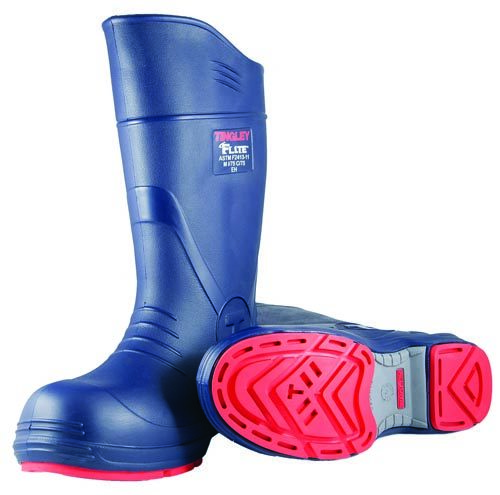Understanding safety footwear ratings
What are the differences among EH, SD, CD and DI ratings on footwear?

Responding is Robert Petersen, senior product manager, Tingley, Piscataway, NJ.
Understanding the differences of electrical hazard, static dissipative, conductive and dielectric footwear can be confusing – even for safety professionals. A review of the standards governing electrical risks and the labeling requirements can prove beneficial for employers, users and professional safety managers. Let’s look at each of the different electrical risks in more detail.
Electrical hazard safety footwear
EH footwear is nonconductive to significantly reduce the flow of electricity through the shoe and to ground, reducing the possibility of electrocution. “EH” will be clearly visible on the ASTM label, and only footwear with a safety toe can receive this designation. EH-rated footwear is intended as a secondary source of protection against incidentally stepping on live electrical wires. This protection is severely deteriorated with excessive wear on the outsoles and/or when worn in wet environments.
Static dissipative safety footwear
SD footwear (sometimes referred to as ESD – for electrostatic dissipative) is designed to reduce static electricity buildup by conducting the charge from body to ground while maintaining a sufficiently high level of resistance. Such footwear will have “SD-100,” “SD-35” or “SD-10” clearly visible on the ASTM label and must meet the ASTM requirements for toe impact and compression resistance.
If SD footwear is required, it’s important to note that buying properly labeled SD footwear is only half the battle. To consistently and effectively accomplish static dissipation, several factors must be controlled. First, the wearer cannot add to or replace the specially designed SD insole supplied with the footwear. The use of powders intended to eliminate foot sweat should not be used with SD boots. Even certain socks cannot be worn with this footwear, as they can impede the flow of electrical charges to ground.
Conductive footwear
CD footwear is designed to “conduct” static electricity through the shoes and into the neutral ground. The intention is to protect the wearer – and all persons in the vicinity – against ignition hazards such as those found at a munitions or fireworks manufacturing facility. CD footwear is not intended to be worn by personnel working near open electrical circuits. Such footwear will have “CD” clearly visible on the ASTM label and must meet the ASTM requirements for toe impact and compression resistance.
Dielectric footwear
DI footwear can be worn over a sock or shoe and is designed to provide significant isolation or insulation in step-potential environments during incidental contact with energized electrical conductors, apparatus or circuits. Examples include working on energized power lines or, particularly, in the area of live downed power lines, as current can jump large distances. Additional uses include digging in areas with underground power lines that can be damaged by a worker using a shovel, drill or other mechanized equipment.
Selecting footwear for a specific electrical risk is a process that needs a careful assessment of the work environment. Additionally, periodically inspect the footwear’s outsoles for excessive wear; in some cases, ensure worker compliance with choice of insoles and socks; and instruct workers not to use foot powders. Many footwear choices are available, and a well-informed end user working with a professional safety manager can ensure that everyone is compliant and safe.
Editor's note: This article represents the independent views of the author and should not be construed as a National Safety Council endorsement.
Post a comment to this article
Safety+Health welcomes comments that promote respectful dialogue. Please stay on topic. Comments that contain personal attacks, profanity or abusive language – or those aggressively promoting products or services – will be removed. We reserve the right to determine which comments violate our comment policy. (Anonymous comments are welcome; merely skip the “name” field in the comment box. An email address is required but will not be included with your comment.)

